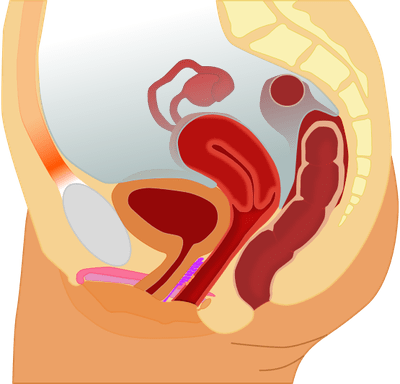Advertisement
Study: Elusive G-Spot Identified On Cadaver, But Controversy Remains

A controversial Florida researcher says he's identified the ever-elusive G-spot on an 83-year-old cadaver. The G-spot (for Grafenberg) is, of course, the part of a woman's anatomy that when stimulated is supposed to lead to more powerful sexual arousal and orgasms. Its existence has long been up for debate.
But wait. The researcher behind all this, cosmetic gynecologist Adam Ostrzenski, has some baggage of his own, according to numerous reports.
Here, for instance is some major debunking in Scientific American by blogger Ricki Lewis who suggests the doctor is slightly confused:
The discovery of the G-spot in a lone elderly corpse and the lack of information on just what Dr. O dissected are obvious limitations of the paper in the Journal of Sexual Medicine, a peer-reviewed publication from Wiley. Less obvious is trouble with a different G – the guanine in genes.
Dr. O’s motivation to dissect deeper into the tissues of the cadaver’s vaginal wall than had been done before, he told me, stemmed from a 2008 paper describing “the G-spot gene.” It “has already been incorporated into the Affymetrix GeneChip,” he wrote in the article.
When I asked how a gene could specify a body part, he referred me to the paper mentioning Affymetrix, a company that manufactures tiny chips (microarrays) fringed with DNA pieces used to assess gene expression in clinical research samples for diagnosis. “I have no clue what this means, but for me, if it has a genetic component, then I believe everybody should have it,” referring to the mysterious G-spot.
And there it was, published in BMC Genomics: G-spots cause incorrect expression measurement in Affymetrix microarrays.
A G-spot, in genetics, is a stretch of four guanines in DNA: GGGG. Such repeats are well known to disrupt enzymes that replicate DNA, and they also affect the functioning of DNA probes affixed to chips. That’s what the referenced paper is about — not a bump beneath the vaginal wall that swells upon contact, first described by Ernest Grafenberg in 1950 and named the G-spot in a 1982 book The G Spot by Beverly Whipple.
Advertisement
Oops.
Next, is this excellent point about Ostrzenski's potential conflicts of interest raised by blogger Dr. Petra Boynton:
...the author claims he has no conflict of interest. Which is concerning given he runs a Cosmetic Gynaecology practice this is not in itself sinister but it does have a bearing on why he may have an interest in proving the presence of a g-spot and should have been declared in both the press release and the paper. It is remiss of the journal and publisher not to ensure this was done.
Alongside the numerous cosmetic genital procedures he offers, Dr Ostrzenski trains practitioners in procedures including ‘g-spot fat augmentation’ and ‘g-spot surgical augmentation’.
This sounds very much like something that could well be considered a conflict of interest and should have been declared as such in the paper.
And, last week, Marc Abrahams did some nice sleuthing on his Improbable Research blog about the G-Spot doc, notably that Ostrzenski sued a peer reviewer he didn't agree with.
And for the record, here's Ostrzenski's press release, out today:
For centuries, women have been reporting engorgement of the upper, anterior part of the vagina during the stage of sexual excitement, despite the fact the structure of this phenomenon had not been anatomically determined.
A new study published in The Journal of Sexual Medicine documents that this elusive structure does exist anatomically.
Adam Ostrzenski, M.D., Ph.D., of the Institute of Gynecology in St. Petersburg, FL, conducted a stratum-by-stratum anterior vaginal wall dissection on an 83-year-old cadaver. The dissection established the presence of the G-spot, a well-delineated sac structure located on the dorsal (back) perineal membrane, 16.5 mm from the upper part of the urethral meatus, creating a 35 degree angle with the lateral (side) border of the urethra.
Having 3 distinct regions, the G-spot emerged with dimensions of length (L) of 8.1 mm x width (W) 3.6 mm to 1.5 mm x height (H) 0.4 mm. Upon removal of the entire structure with the adjacent margin tissues, the G-spot stretched from 8.1 to 33 mm.
“This study confirmed the anatomic existence of the G-spot,
which may lead to a better understanding and improvement of female sexual function,” Ostrzenski concludes.
Irwin Goldstein, editor-in-chief of The Journal of Sexual Medicine believes that research in women’s sexual health issues is important. “This case study in a single cadaver adds to the growing body of literature regarding women’s sexual anatomy and physiology.”
This program aired on April 25, 2012. The audio for this program is not available.
